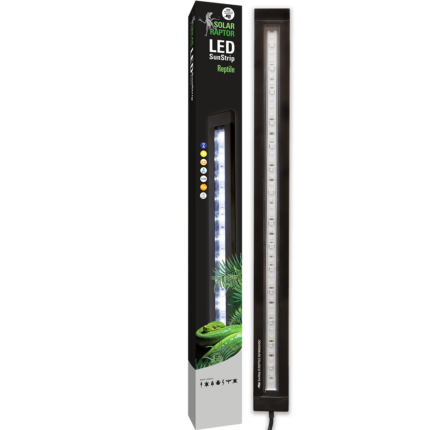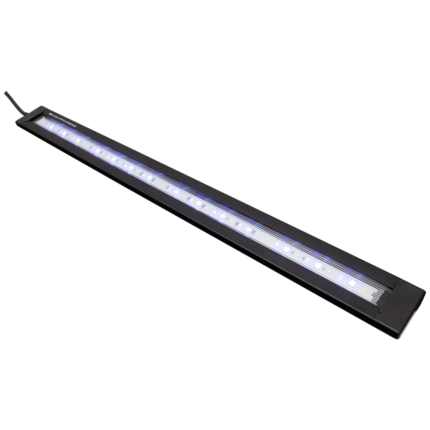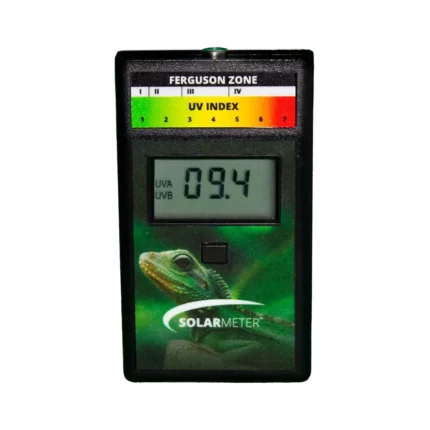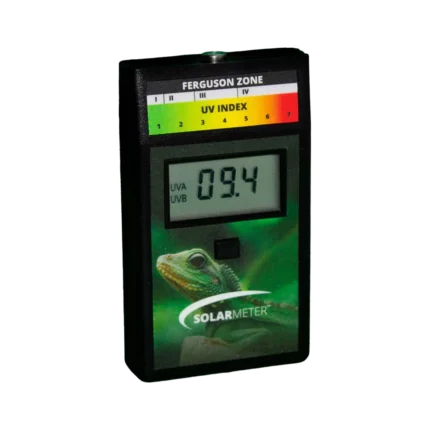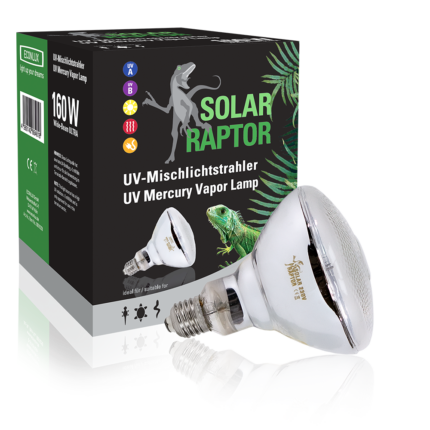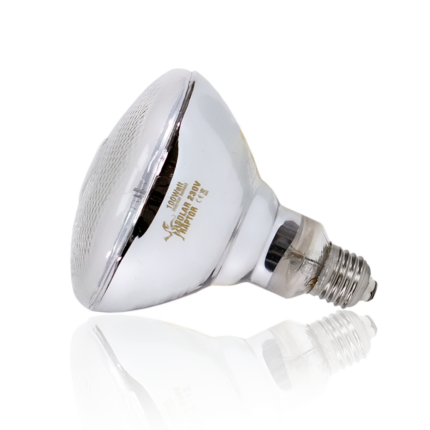In this post, we want to talk about the different types of reptile lighting and how they can help keep your reptile healthy. There are hundreds of reptile lighting products available today, but they serve different purposes. Our guide to reptile lighting will help you choose the right product for the species you want to keep.
Let’s start with how reptiles use light in the first place.
How reptiles use light
SOLAR RAPTOR® SunStrip III 35 REPTILE Black Edition Bundle
- UV-A LED lighting for terrariums
- The bundle includes DRV power supply unit
- Safe operation with low-voltage technology
- Versatile mounting options
incl. VAT
plus shipping
Let’s first look at the different types of light utilisation in reptiles: All reptiles rely on the sun as a source of heat, either directly or indirectly. Unlike mammals, reptiles cannot warm their bodies from the inside. They are dependent on external heat sources. This is why you often see snakes, lizards and tortoises lolling around in the sun in the wild. In doing so, they absorb heat from warm surfaces and also directly from the sun. This increases their body temperature, which in turn promotes their digestion and other internal processes.
Some reptiles also use the sun’s light for other purposes. Most tortoises and lizards are dependent on the sun’s UV rays. They need it to produce vitamin D3 in their bodies, which is essential for the proper absorption of calcium. Without UVB light, these reptiles would not be able to absorb calcium properly. This can lead to a variety of health problems, including metabolic bone disorders.
How to choose the right lighting products
You’re probably starting to realise why the right lighting is so important for the health of your animals. But what kind of reptile lighting do you need?
This in turn depends on the species you are keeping or would like to keep.
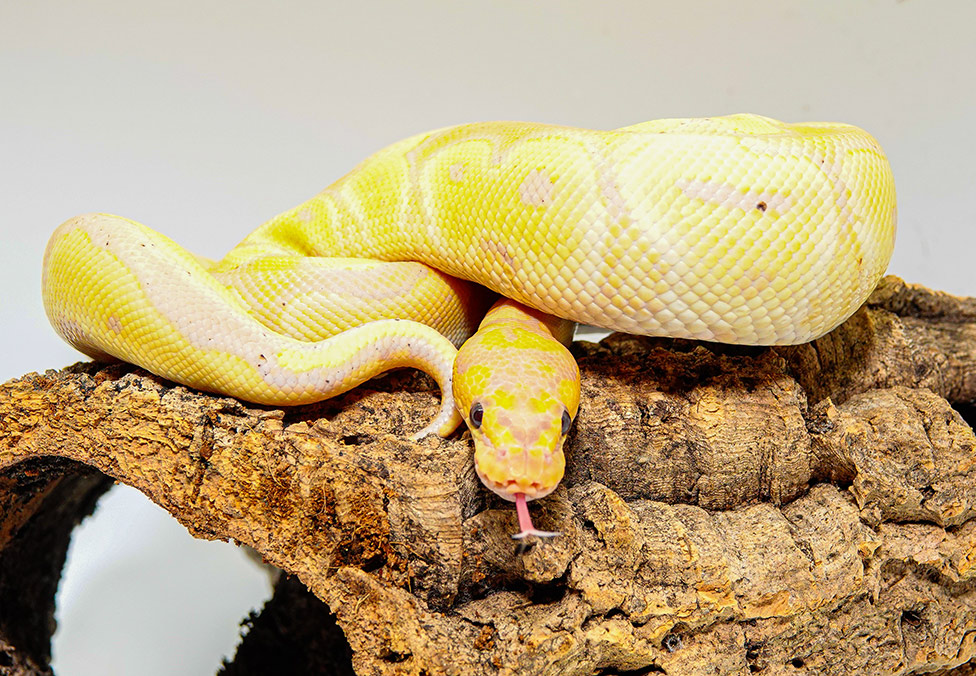
Lighting for snakes
Solarmeter® 6.5R Reptile UV Index
If you keep snakes as pets, lighting is less of a problem. Snakes can live a long and perfectly healthy life if the light comes from a window or a ceiling light in the room itself. They certainly benefit from a basic day and night cycle. But they are not dependent on UVB exposure like some lizards and turtles.
For snake keepers, we recommend a simple fluorescent tube above the cage, set on a timer to run for about 10 hours a day. This will give your snake a good photoperiod (a basic cycle of day and night).
Turtle and lizard lighting
If you keep lizards or turtles as pets, you need to think more about lighting products for reptiles. These animals generally require higher UVB irradiation than snakes.
The vast majority of lizards and tortoises require daily UVB exposure for their general health. This helps them to produce vitamin D3 in their bodies, which in turn promotes the absorption of calcium.
Take chameleons, for example. In the wild, chameleons spend most of the day on tree trunks where they are fully exposed to the sun. Without this type of daily UV exposure, a chameleon’s health deteriorates rapidly. Metabolic bone disease is one of the most common diseases in pet chameleons. It is directly related to the lack of light for reptiles. More specifically, it is related to a lack of UVB irradiation at adequate levels.
Tropical lizards, such as chameleons and green iguanas, should be exposed to UVB radiation of 13 to 30 W/cm2 (microwatts per square centimetre). They should have access to this lighting for 10 to 12 hours per day.
Desert lizards, such as bearded dragons, generally cope well with the above-mentioned or slightly higher UVB levels.
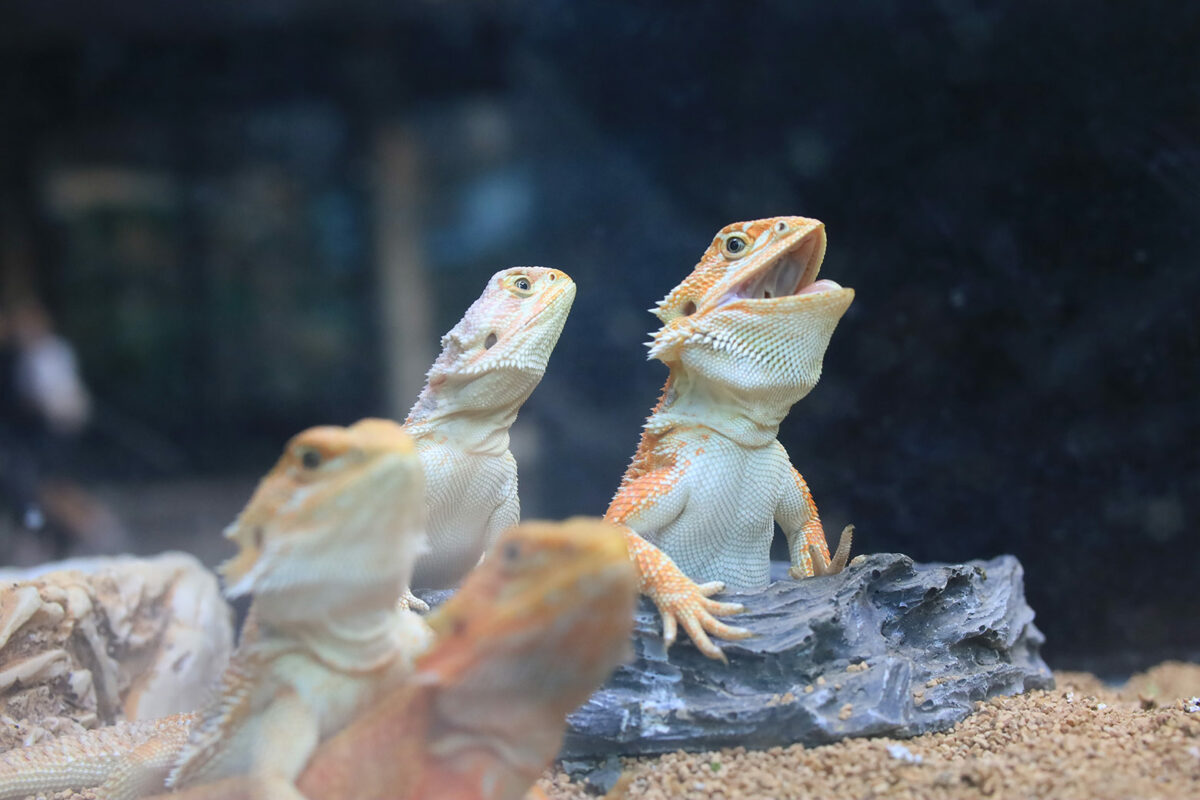

Hint
Find out specifically about the light requirements of the reptile species.
We recommend that you also buy a book (or two) on the subject. This research will make it easier for you to draw up a list of the lighting products you need to buy for your reptile and will also help you make an accurate selection.
Observe your animal in its habitat
SOLAR RAPTOR® UV Mercury Vapor Lamp
- Wide UVA- and UVB-spectrum
- Natural-seeming light
- Pleasant warmth
- Best in operation with the ClampLamp
incl. VAT
plus shipping
So far we’ve talked about the importance of terrarium lighting in terms of animal health. But there’s another reason to light up your terrarium. Because what’s the point of having a reptile if you can’t see it?
This is another advantage of using LED lamps or fluorescent lamps during the day. If you use the right lighting, your reptile enclosure will be livelier and brighter.
There are also certain reptile lights that allow you to see your pet at night. You can buy a specially coated light bulb that only emits a small amount of red light. These are commonly referred to as night lights. With these red spotlights, you can observe your animal at night without disturbing its natural life cycle.
These lighting products also give off some heat, so they can fulfil a dual purpose. They can help you maintain temperatures at night while allowing you to observe your reptile.

Conclusion
Reptile lamps are a useful tool for the care of lizards, snakes and tortoises. Most lizard and turtle species need UVB lighting to stay healthy. Snakes also benefit from a regular day and night cycle, which can be provided with a simple fluorescent tube. Lighting can also be used as a heat source and to improve visual enjoyment.
The most important thing to remember is that different reptiles have different lighting requirements. To find out what type of reptile lighting you need to buy, you therefore need to know the exact care requirements of your species.

